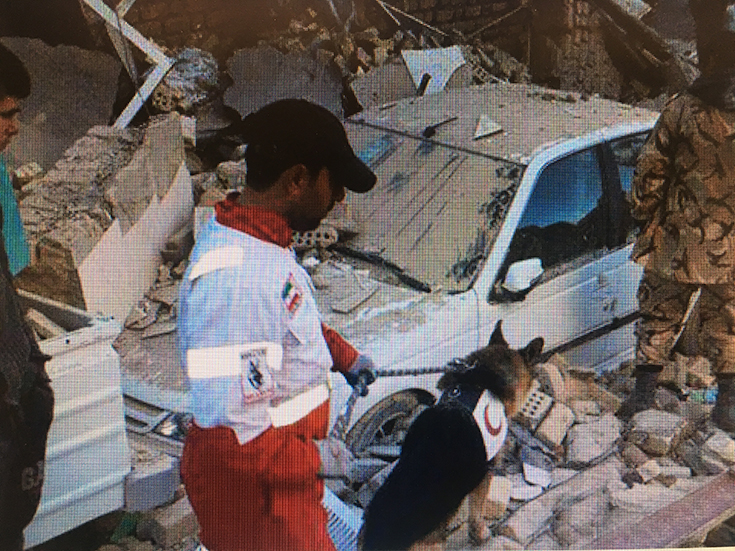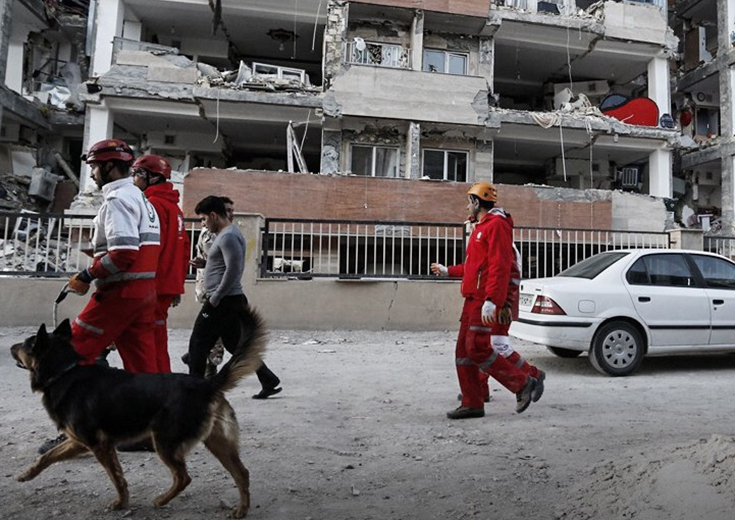Iran earthquake: the disaster, impact and response
Mostafa Mohaghegh, Senior Adviser for Cooperation and Co-ordination, IFRC, and CRJ Editorial Advisory Panel Member, provides an initial short report on, and images of the response to, the earthquake that struck Iran on November 12, 2017

An earthquake with the magnitude of 7.3 scale and depth of 23 km at 21.48 pm local time jolted western Iran and the eastern part of Iraq severely at 21:48hrs on November 12, 2017. Despite the quake not emanating from the region’s well-known fault lines, it was strong enough to be felt in most of Iran, Iraq and a few other countries in the region. Most of casualties and damages occurred in Iranian territory, where eight cities and 1,200 villages suffered the consequences. The earthquake left close to 500 dead, caused, 9,000 injuries, destroyed or damaged more than 15,000 buildings and left 100,000 homeless.
Iran has a strong and internationally known disaster preparedness and response capacity thanks to its long experience in facing natural hazards and the huge capacity of its national institutions, especially the Iranian Red Crescent Society (IRCS), which is a member of the International Federation of Red Cross and Red Crescent Societies. Therefore, disasters of the size and impacts of the recent earthquake are well manageable in Iran and there was no need for international aid in the emergency response phase.
The Iranian Red Crescent Search and Rescue teams – benefiting from 1,500 trained relief workers, 10 helicopters and hundreds of heavy and light vehicles and 31 rescue dog teams –with the support of other national organisations, carried out the rescue phase in less than 48 hours after the earthquake struck. Several hundred people were rescued from under the rubble and thousands of injured people were transferred to local and other nearby hospitals and medical centres.

In the meantime, the standard relief operation was launched to provide shelter, water, food and other facilities and items to survivors. A week after the earthquake, the beneficiaries of assistance had been registered and given weekly relief, which will be followed by monthly relief rations to cover basic needs for several months until temporary shelter and recovery facilities are put in place.
As in any other disaster operation, there were some difficulties in this operation that made the response even more challenging. The region affected by the earthquake is vast and many villages are located in remote, mountainous areas. But despite these challenges, the emergency response operation was completed successfully after three days.

The longer-term relief operation and recovery phase also proved to be challenging. Although not required in the emergency phase, the ICRS welcomed international support and aid to continue relief operations and help towards rehabilitation and recovery programmes. For more information in this regard please visit here
All photos courtesy the author. A more detailed report will be published in CRJ 13:2, early 2018
Mostafa Mohaghegh, 21/11/2017